Here is the account I submitted to the HOS later that day:
I have been a keen orchidist for six years now, and each season put aside one morning or afternoon in order to search the location where the last Kentish sighting had been made.
We used 2nd hand accounts, 3rd hand accounts and even more obscure sources. Last year we were enthused, but two half day hunts drew a blank, and so I guess I really believed that we would not find one in the county, and so was extinct.
I run a Kentish Orchid group on Facebook, so as a last throw, I thought I would throw out the idea of a hunt including as many members of the group as possible to cover as much ground.
In the end, two days were selected, once those spikes in Sussex had been reported to be in flower, as I understood that the Kentish population were of the early flowering variety.
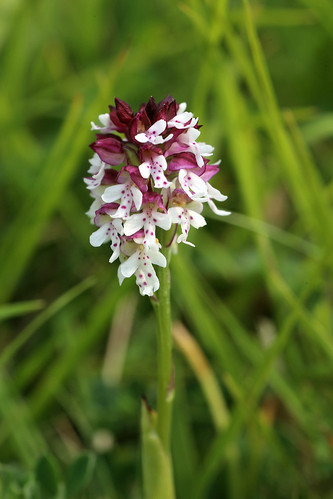 Unbeknown to us, on Saturday 19th a single spike was found and reported to the county recorders.
Unbeknown to us, on Saturday 19th a single spike was found and reported to the county recorders. The first hunt I planned took place on Thursday 24th May 2018, and being a mid-week, just two others turned up in Temple Ewell, but both other attendees had both seen spikes in previous years, and had a wealth of information.
We set off up the down from Temple Ewell, marvelling in the plethora of butterflies that were out on the wing, but mostly basking, allowing us to photograph them, which in itself had made the effort all worthwhile.
The path begins to drop down, and on the other side of a fence, is where the old Lydden Down reserve used to begin; this is where I had heard the last sighting had been, and so in previous years I had concentrate on for our hunts.
We split up and covered the down in horizontal and vertical lines, only succeeding in find ever more Early Spiders, which again, was worthwhile in itself.
 The other attendee took us further down the down, and pointed to a south-east facing slope, pointing to where he said he had seen a spike in 2013.
The other attendee took us further down the down, and pointed to a south-east facing slope, pointing to where he said he had seen a spike in 2013. We spit up again, but he, concentrating on where he had seen the spike reviously. I was about ten yards away when a shout went up, I could not believe it.
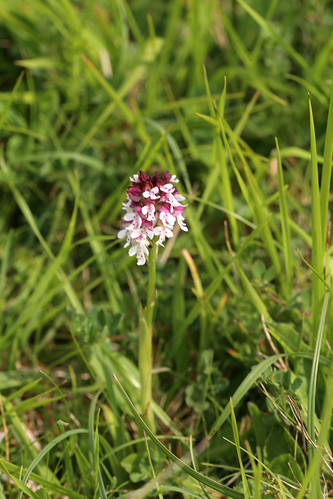 I walked over saying, even though I did not know these guys before that morning, "you're pulling my leg?"
I walked over saying, even though I did not know these guys before that morning, "you're pulling my leg?"No, they said, pointing down to a tuft of grass, and at the base of the grass was a single flowering spike, smaller than it's Sussex cousins, but fully out and in tip top condition.
We all took time to photograph it, and as I kneeled down before the orchid, the sun broke through the cloud for the first time that morning, and I got a wonderful shot.
We decided not to look any further lest we walk on any more developing spikes, although subsequent searches have drawn more blanks.
I have since found that the recorder had been visiting the spike daily to hand pollinate each flower in order to get it to set seed.
That evening, I posted the finding on two Facebook groups and again on Twitter informing BSBI of the discovery.
I also wrote to the group of four recorders, and it was in one of their replies that I found that one recorder was horrified that he had been told the finding was on Twitter, so I decided to remove my tweets regarding the finding, but keeping the finding to the two closed Facebook groups.
I heard yesterday that the spike is still in good condition, and the area around it not too flattened, and so hopes are high that when it goes over this week it will set seed, and in years to come we might have more spikes in Kent.
In the following days, I took a friend who had been looking here for eight years, and I will be honest, it has been emotional for us all. BUt we can now say that Neotinia ustulata is still a current Kent species and not extinct.
There you go.
Thing is, a meeting of orchidists means the swapping of information, new sites, new species and hits as to where to go next. I had heard from FB that a very rare hyper-green, or one lacking in chlorophyll at all, had been seen in the county, and I had directions. So I went with both the guys to hunt the spike.
Well, we did look everywhere near to where the directions took me, but we could not find the spike. I would have to return another day with better clues.
One of the other guys to share the news that just along the valley there was a meadow that had over 120 spikes of Green Wing Orchids. Now, it is not often we can say we visit a place that is largely unknown to the orchid community, but indeed just along the valley, behind an ancient five bar gate was the steep meadow, and along the ridge 143 spikes of the orchid.
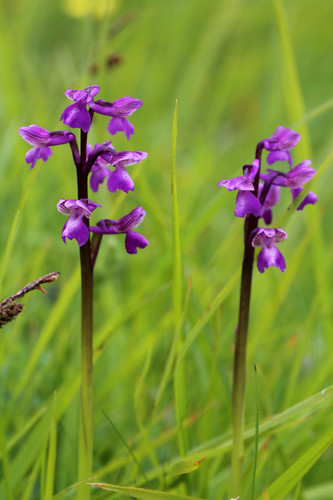 I was also told of another site near to Dover where both Green Wing and Late Spiders had been found, as well as a Burnt Tip no more than a handful of years ago. There just wasn't time to check that out this year, but there will be other years.
I was also told of another site near to Dover where both Green Wing and Late Spiders had been found, as well as a Burnt Tip no more than a handful of years ago. There just wasn't time to check that out this year, but there will be other years. The next day, I took a friend along to look for the green Fly, and after 20 minutes, in very dark, gloomy and dank conditions, we found it. Or them. Three spikes, one sadly had been damaged before we got there, but the other two were still fine.
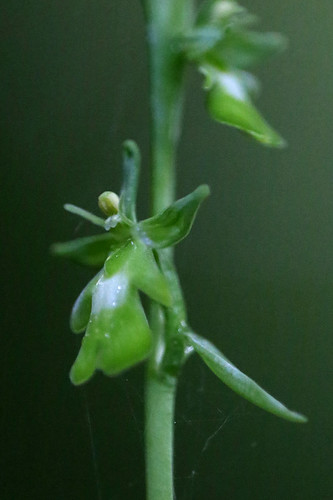 Only problem was getting a shot in the dark conditions, and it was at that point I made the decision that I was going to buy a ring flash later in the year, when we could afford it, for spikes like these.
Only problem was getting a shot in the dark conditions, and it was at that point I made the decision that I was going to buy a ring flash later in the year, when we could afford it, for spikes like these.What it did show to us is that in these more orchid aware times, sheer weight of numbers was having a detrimental effect on the very thing we had come to enjoy, and that is not a good thing.
Over the next two days I returned twice to see the Burnt Tip and to show others, but really tried to limit the numbers and explain to all those who attended how important that we keep the site, or location secret, so the spike could set seed. Only time will tell if we did that of course.
Up near the Burnts I found another two colonies of Early Spiders, still clinging on at the end of May. These downald spikes are much later than those on the coast, and are of a darker colour too.
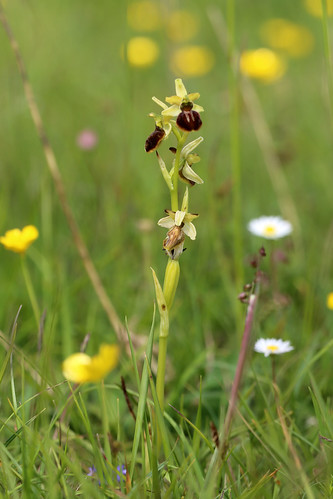 By Bank Holiday Monday my holiday had come to an end, and I had not visited all the sites I wanted to, neither in Kent or elsewhere. I would have to be more careful with my time next season.
By Bank Holiday Monday my holiday had come to an end, and I had not visited all the sites I wanted to, neither in Kent or elsewhere. I would have to be more careful with my time next season.The Var. choloiantha White Helleborine had opened by this time, but had been partially trodden on, so was an odd shape, but the flower and pale leaves well with a snap.
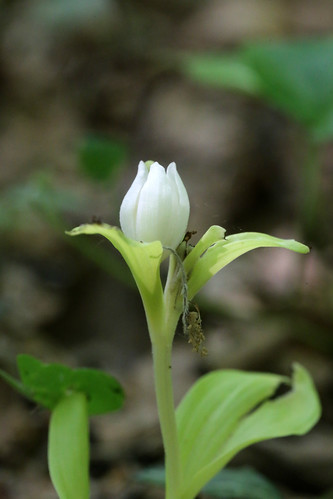 At the small wood the White Helleborines were all opening their flowers, well, some of them, including this one which was as wide as I had ever seen. This is because this species self polinates, so does not have to open its flowers for pollinators, sometimes, its just for the fun of it.
At the small wood the White Helleborines were all opening their flowers, well, some of them, including this one which was as wide as I had ever seen. This is because this species self polinates, so does not have to open its flowers for pollinators, sometimes, its just for the fun of it.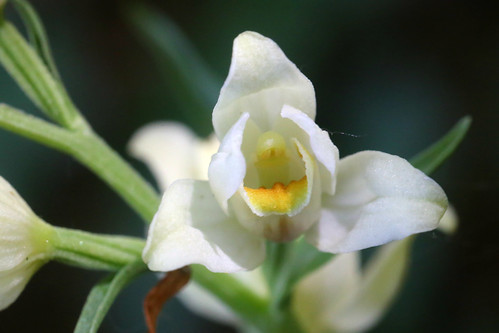 And the few Birds Nest were also at their peak, including this one caught in a beam of sunlight.
And the few Birds Nest were also at their peak, including this one caught in a beam of sunlight.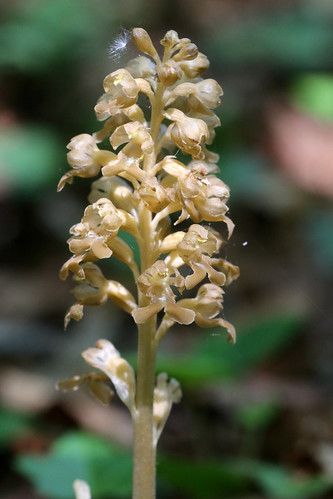 Or closer up:
Or closer up: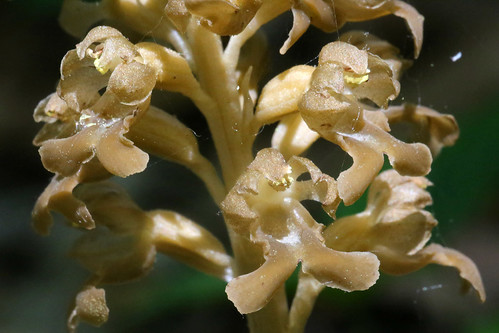 At the new-found meadow, the Greater Butterfly were beginning to open, but I would fail to see many of them open, or the site of the hillside a sea of dancing green and white spikes due to the pressure of work, as the next day, I had to travel back to Denmark as work and real life was calling me.
At the new-found meadow, the Greater Butterfly were beginning to open, but I would fail to see many of them open, or the site of the hillside a sea of dancing green and white spikes due to the pressure of work, as the next day, I had to travel back to Denmark as work and real life was calling me.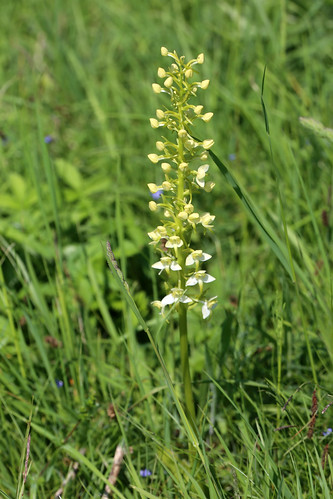 The hot weather, if anything, turned even warmer, baking the soil all over the South East as hard as concrete and depriving plants the water they need to grow Many orchids can skip a season or two if the conditions are bad, and near the coast where on a good year there are hundreds of Bee Orchids, there was less than ten this year, most growing in the shade of bushes that must have kept some moisture in the soil.
The hot weather, if anything, turned even warmer, baking the soil all over the South East as hard as concrete and depriving plants the water they need to grow Many orchids can skip a season or two if the conditions are bad, and near the coast where on a good year there are hundreds of Bee Orchids, there was less than ten this year, most growing in the shade of bushes that must have kept some moisture in the soil.I did see a few Bee on June 2nd, but it was a poor show all told.
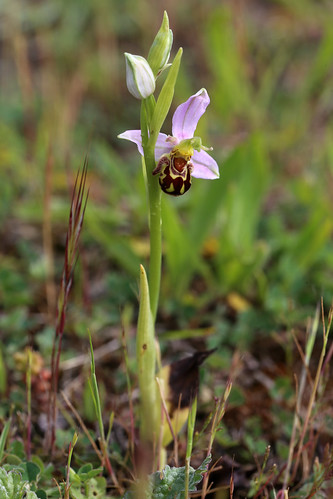 This one freshly opened, just waiting for its first visitor:
This one freshly opened, just waiting for its first visitor: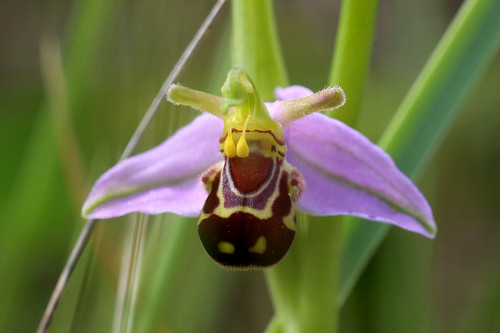 Also on the 2nd, it was a busy day, I went back up the downs and found another small colony of Late Spiders, right beside a busy path, just growing in the shade of an old shed, unnoticed by everyone, whilst nearby their better know brothers and sisters are kept behind an electrified fence to keep errant snappers at bay.
Also on the 2nd, it was a busy day, I went back up the downs and found another small colony of Late Spiders, right beside a busy path, just growing in the shade of an old shed, unnoticed by everyone, whilst nearby their better know brothers and sisters are kept behind an electrified fence to keep errant snappers at bay.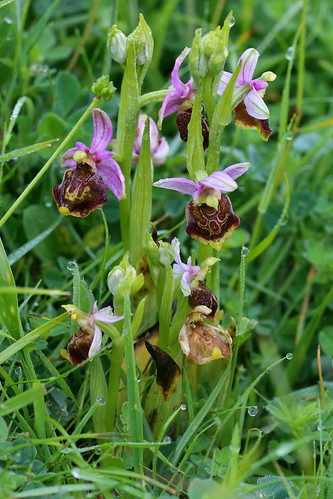

No comments:
Post a Comment